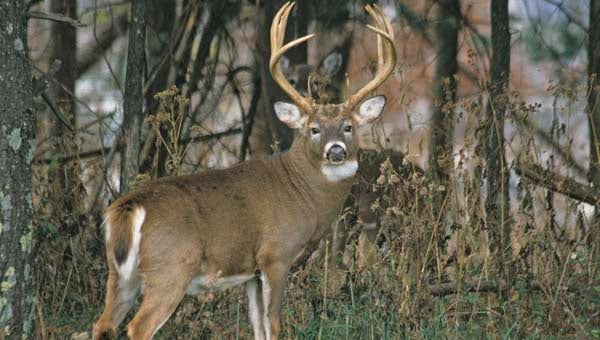Southampton County deer harvest down 22%, IOW 15%
Published 10:28 am Thursday, February 28, 2013
RICHMOND—Southampton County had the third highest deer harvest out of Virginia’s 95 counties for 2012-13, yet saw a 22 percent drop from the previous season.
In Isle of Wight County, the kill dropped by 15 percent over the previous season, according to preliminary figures from Virginia Department of Game and Inland Fisheries.
The white-tailed deer harvest was down 8 percent across Virginia compared to 2011-12.
In Southampton, 5,150 deer were killed, down from 6,559 one year earlier. In Isle of Wight, 2,126 were taken, down from 2,494.
Glen Askins, terrestrial wildlife biologist for Southeastern Virginia, called the decline in Western Tidewater a “fluke” and attributed it to disease, the tremendous availability of food and coyotes killing fawns.
“I’ve been working here for 23 years, and I’ve seen about three of these events — when it comes together all at one time,” Askins said. “The deer population has gone down a little bit in the last five years, but it’s still a high deer population.”
Deer throughout the Southeast United States are suffering from Hemorrhagic disease, which is transmitted by tiny biting flies.
“This was a year when we experienced some HD disease,” Askins said. “It always comes on the heels of a drought.”
When deer get the disease, they experience a high fever and will move to a cold wet area, Askins said. Some survive.
Also, due to the drought, Western Tidewater saw a good acorn crop.
“Deer are driven by the stomach and energy,” he said. “If they can stand up, get a belly full and lay back down, they don’t expend a lot of energy. When this happens, the deer don’t move. If the deer don’t move much, the deer hunters don’t see them as often.”
The third thing is coyotes.
“We do know coyotes take fawns,” Askins said. “They’ve only been on our landscape for 15 to 20 years so we don’t have a good handle on the mortality as far as coyotes taking fawns.”
A further break-down of deer taken in Southampton County included 1,909 bucks, 616 male fawns and 2,624 doe. In Isle of Wight County, 806 bucks were taken, 296 male fawns and 1,024 doe.
In neighboring Sussex County, 3,203 deer total were taken in 2012-13, and in Surry, 2,268.
Bedford County led in deer kills with 7,655 and Loudoun County followed with 6,026.
During the past season 213,597 deer were reported killed by hunters in Virginia. This total included 96,712 bucks, 18,061 button bucks and 98,781 doe. The previous season saw 233,104 deer killed. The recent season’s harvest is also below the 10-year annual average of 232,573.
Most of the decline in 2012 deer kill was in the doe kill, which was down 13 percent from 2011. The buck kill was only down 2 percent from 2011.
Archers, not including crossbow hunters, killed 15,791 deer. The bow kill comprised 7 percent of the total deer kill. Crossbows resulted in a deer kill of 10,596 deer or 5 percent of the total.
Muzzleloader hunters harvested 54,808 deer or 26 percent of the total deer kill.
The youth deer hunting day in September resulted in a deer kill of 1,977.
The department’s primary deer management effort over the past five years has been to increase the female deer kill over much of the state, especially on private lands. Female deer kill numbers have been at record levels for the past six consecutive deer seasons.
These high and sustained levels were intended to eventually lead to a decrease in the statewide deer herd and a decline in total deer kill numbers. Deer kill totals over the past three years would appear to suggest that these management efforts have been successful.






